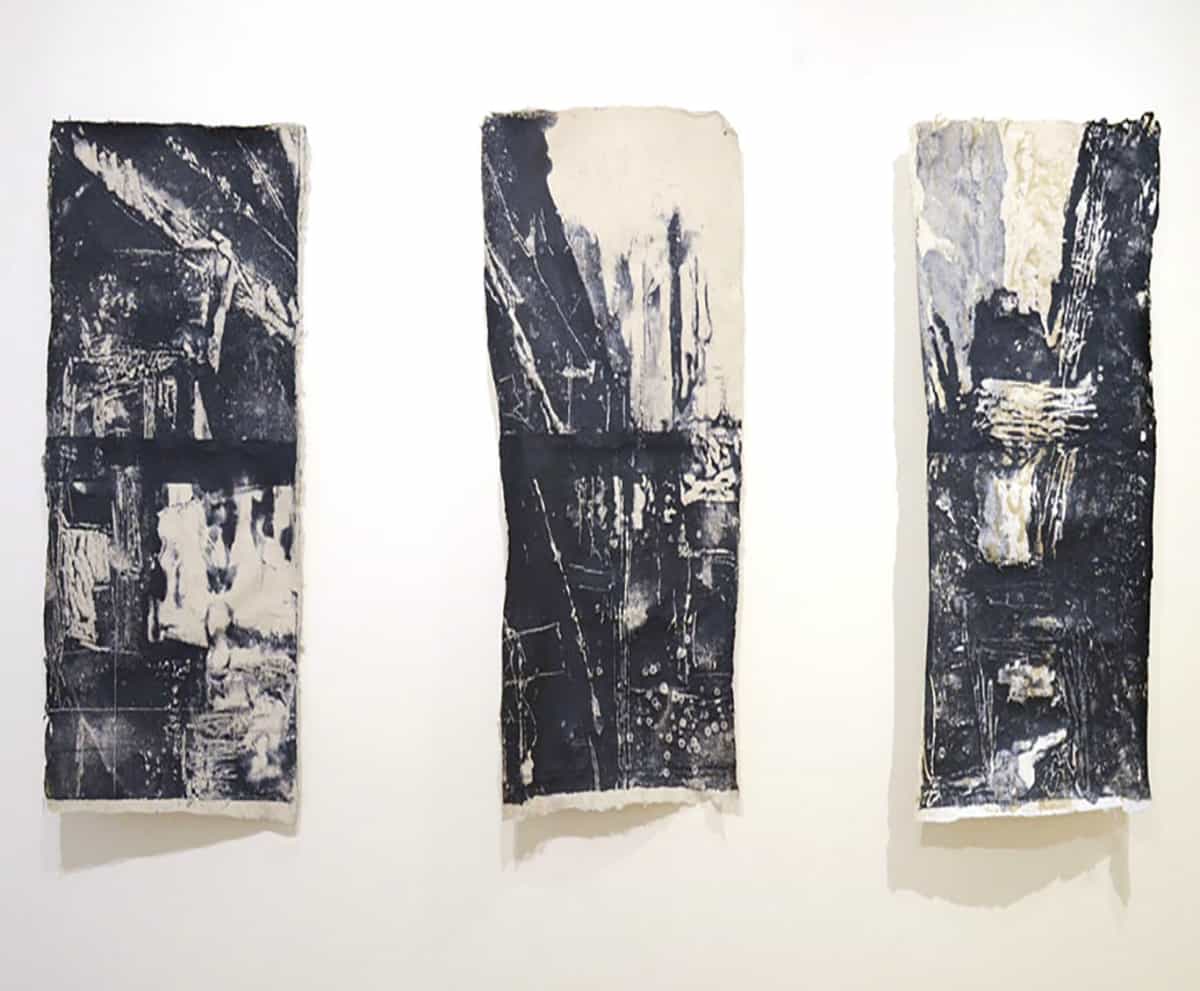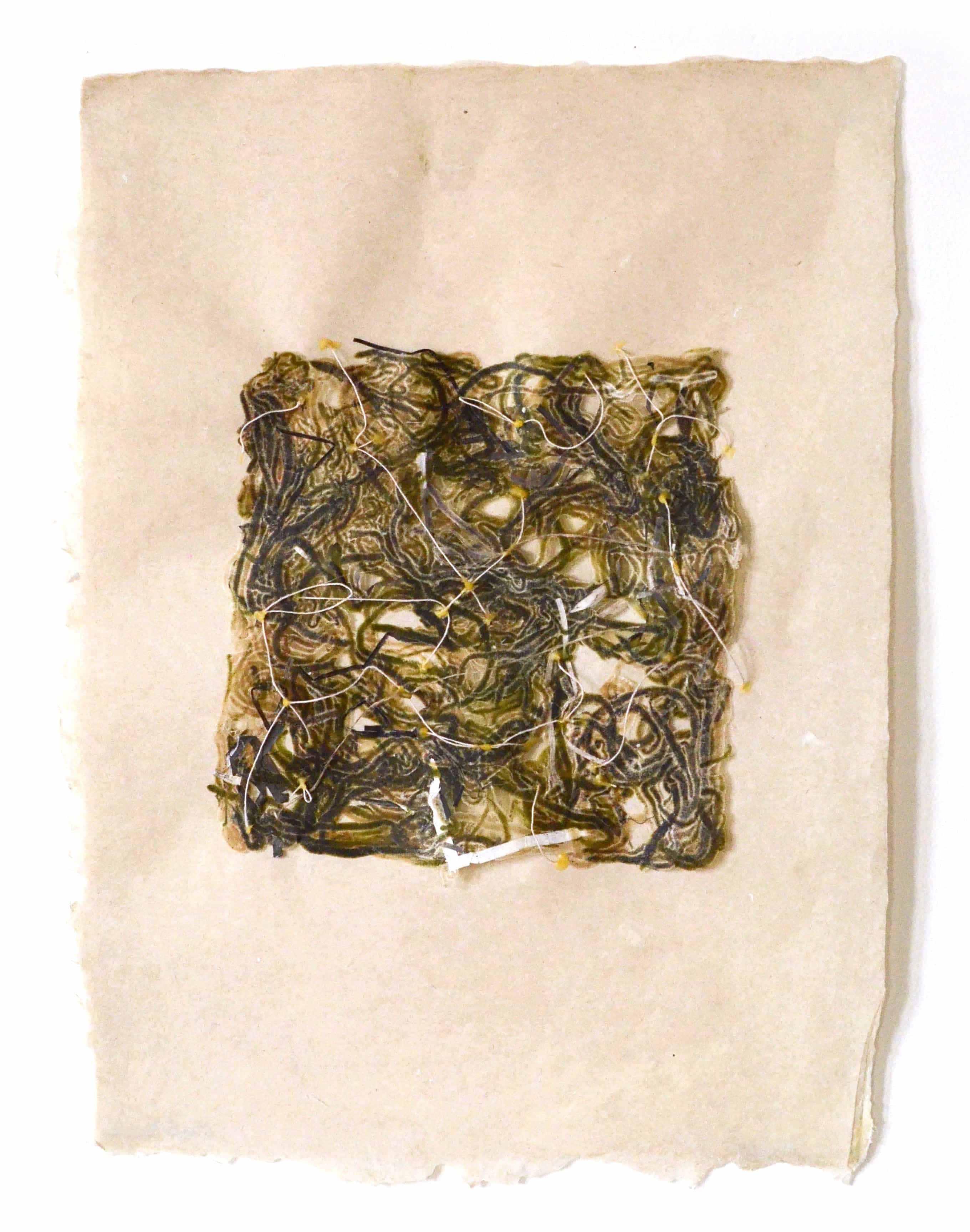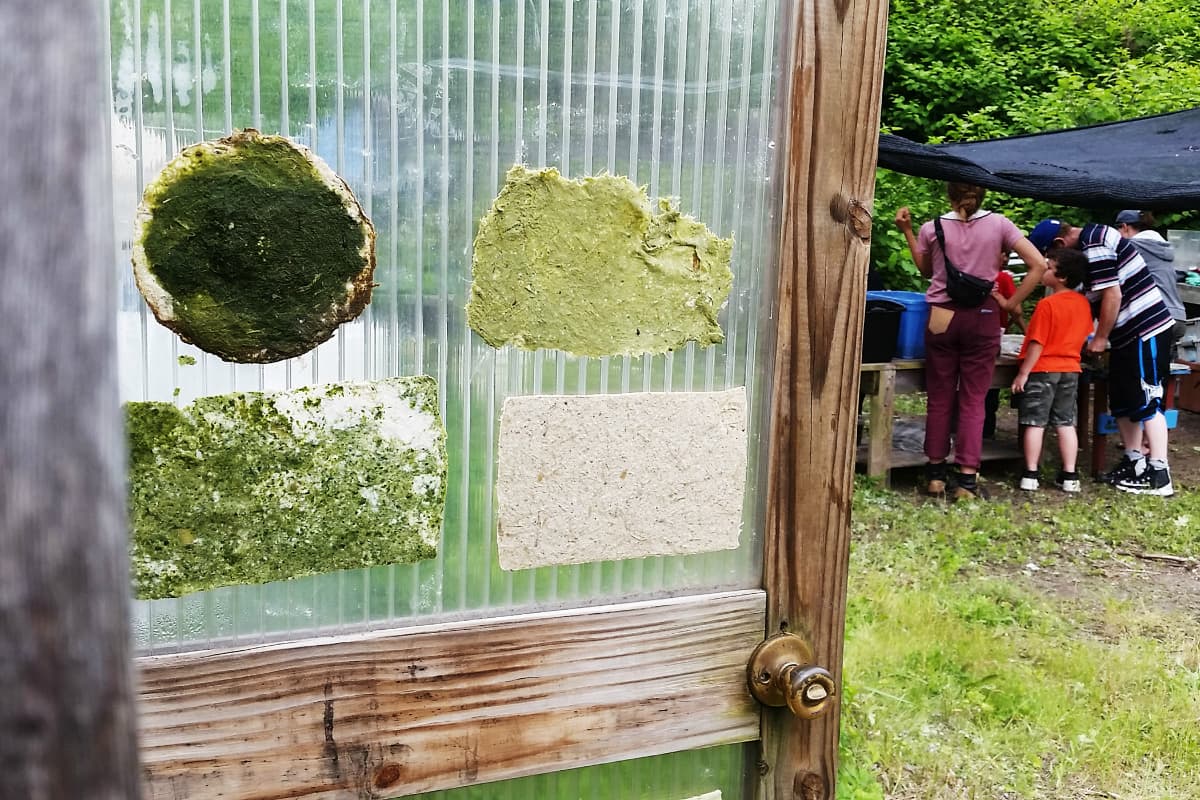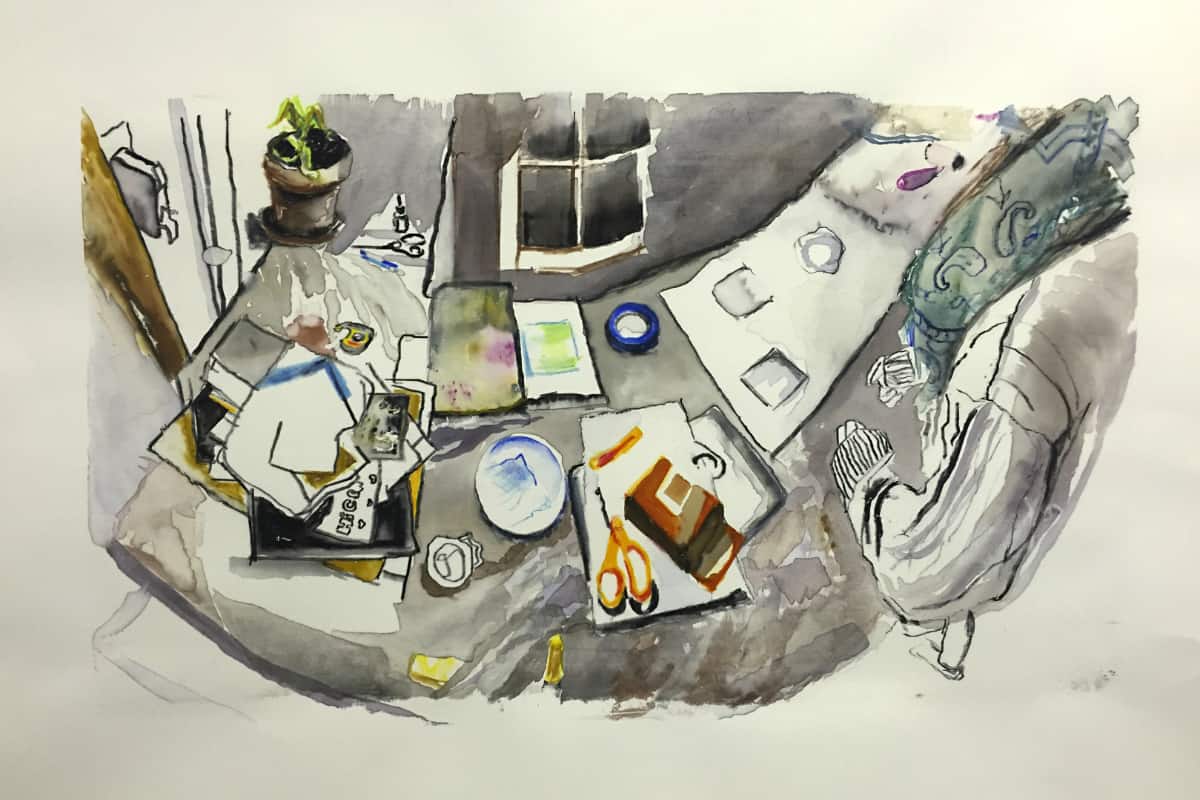Pawtucket, Rhode Island artist May Babcock looks to the flora around her to make her unusual paper arts creations.
Visit the Rhode Island seashore, stumble on some Japanese knotweed, and you’ll probably label it as a nuisance. May Babcock sees the invasive species as a source of inspiration. “I have been looking at plant ecologies, and there are a lot of such invasive plants along the shoreline, and I see the fibers,” Babcock says. Fibers for making paper, that is. Babcock, an interdisciplinary artist whose main focus is paper, uses such plants and creates fibers as raw materials. “I have been using what’s available, so it makes sense to use these plants that nobody wants,” she says of the knotweed.
For her work, Shoreline Studies, Babcock, an artist who lives in Pawtucket, Rhode Island, visited the Ocean State’s coastline and made a few preliminary sketches to capture the landscape. The entire series is made of different kinds of paper pulp, including the one derived from the knotweed. Papermaking artists often work with different kinds of colored pulp, and that was the effect Babcock was going for. “There’s no ink involved,” she says. “It’s all a monotype look.”

Lisa Laughy photo
Babcock has a multi-dimensional approach to her art. She uses a variety of printmaking, hand papermaking, sculpture, and book arts techniques to bring a “printerly” outlook to her art. Instead of the printer’s matrix and ink, Babcock uses various kinds of pulp to fill in for ink and create striking visual effects.
Babcock, a Connecticut native, maintains a blog called Paperslurry that focuses on paper arts. She is heavily invested in spreading the word about paper art, recently teaming up with Providence-based Southside Community Land Trust and her local community garden to teach papermaking from plants. Families with children showed up, she says, to learn about the different weeds in the garden that can be used to make paper. “We cut them down and cooked them up. It was a lot of fun hand-beating fibers in the garden,” Babcock says. The class used mugwort and a variety of different weeds, even mint, as part of their experiments.

Little Harbor Beach, Study 4
Babcock made the move to focus solely on her art career after initially working in graphic design and marketing. Rhode Island has informed Babcock’s workshops as well as her art, which, she says, has developed more of an environmental focus. “It’s really taken me a good four or five years to really realize which direction my artwork was going,” she says.










